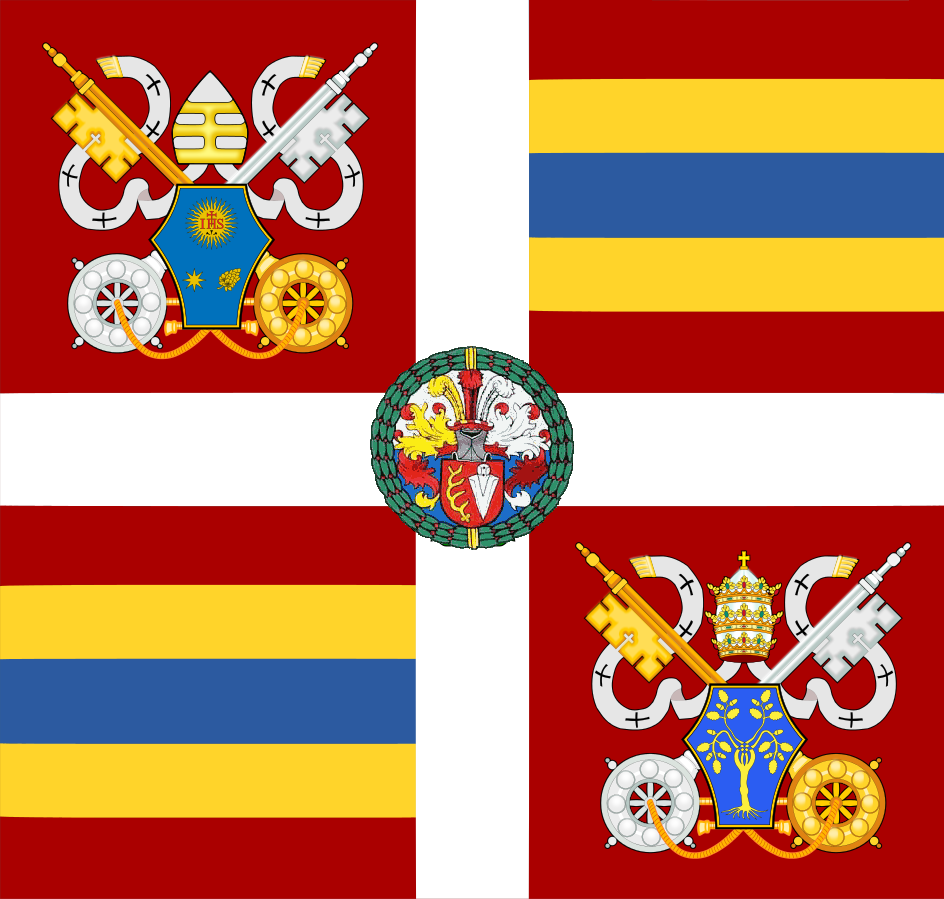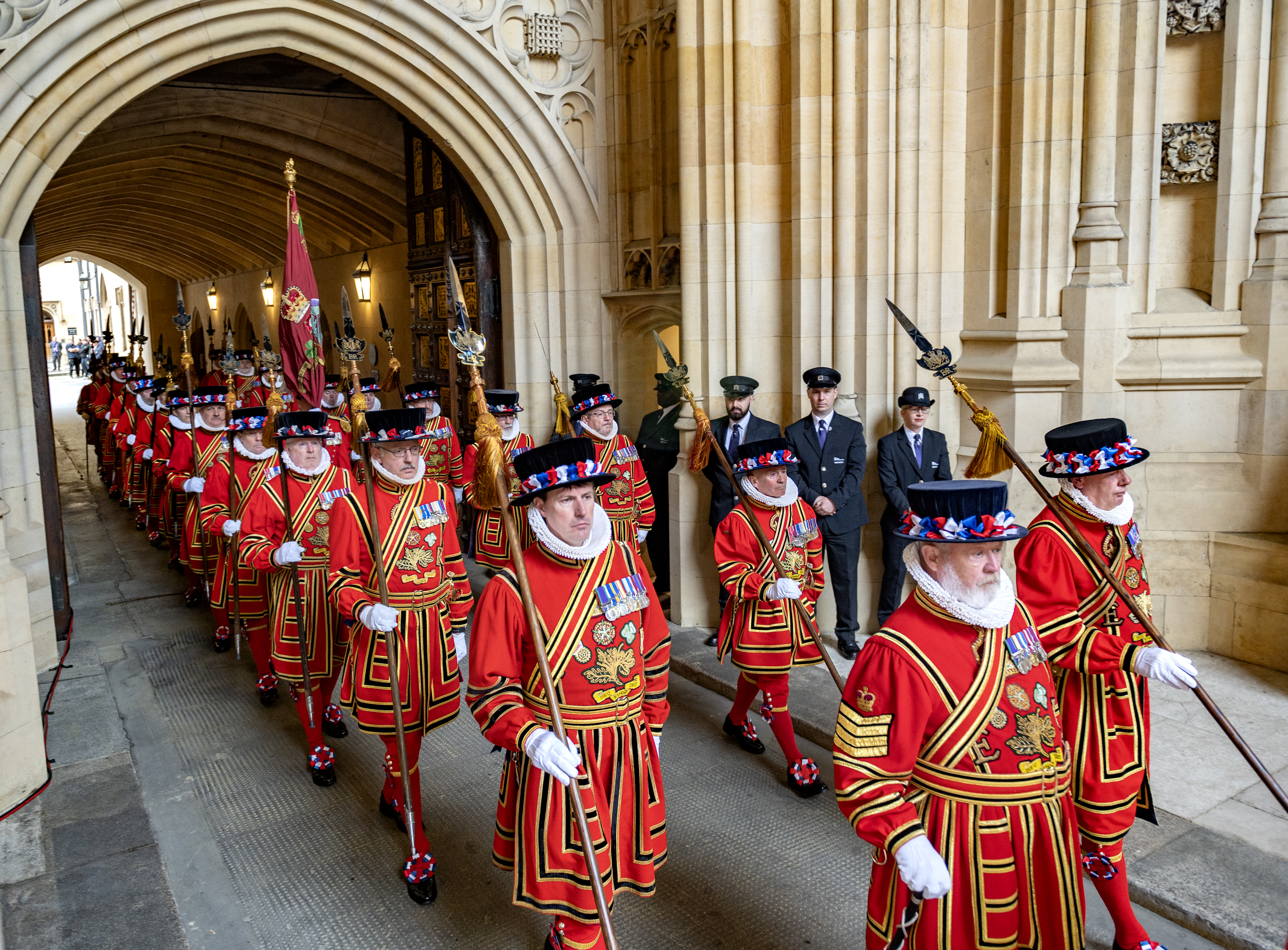|
Pontifical Swiss Guard
The Pontifical Swiss Guard (also Papal Swiss Guard or simply Swiss Guard; la, Pontificia Cohors Helvetica; it, Guardia Svizzera Pontificia; german: Päpstliche Schweizergarde; french: Garde suisse pontificale; rm, Guardia svizra papala) is an armed force and honour guard unit maintained by the Holy See that protects the Pope and the Apostolic Palace within the territory of the Vatican City. Established in 1506 under Pope Julius II, the Pontifical Swiss Guard is among the oldest military units in continuous operation. The dress uniform is of blue, red, orange and yellow with a distinctly Renaissance appearance. The Swiss Guard are equipped with traditional weapons, such as the halberd, as well as with modern firearms. Since the assassination attempt on Pope John Paul II in 1981, a much stronger emphasis has been placed on the Guard's non-ceremonial roles, and has seen enhanced training in unarmed combat and small arms. Recruits to the guards must be unmarried Swiss Cath ... [...More Info...] [...Related Items...] OR: [Wikipedia] [Google] [Baidu] |
Sack Of Rome (1527)
The Sack of Rome, then part of the Papal States, followed the capture of the city on 6 May 1527 by the mutinous troops of Charles V, Holy Roman Emperor during the War of the League of Cognac. Despite not being ordered to storm the city, with Charles V intending to only use the threat of military action to make Pope Clement VII come to his terms, a largely unpaid Imperial army formed by 14,000 Germans, many of Lutheran faith, 6,000 Spaniards and some Italian contingents occupied the scarcely defended Rome and began looting, slaying and holding citizens for ransom in excess without any restraint. Clement VII took refuge in Castel Sant'Angelo after the Swiss Guard were annihilated in a delaying rearguard action; he remained there until a ransom was paid to the pillagers. Benvenuto Cellini, eyewitness to the events, described the sack in his works. It was not until February 1528 that the spread of a plague and the approach of the League forces under Odet de Foix forced the army t ... [...More Info...] [...Related Items...] OR: [Wikipedia] [Google] [Baidu] |
Halberd
A halberd (also called halbard, halbert or Swiss voulge) is a two-handed pole weapon that came to prominent use during the 13th, 14th, 15th, and 16th centuries. The word ''halberd'' is cognate with the German word ''Hellebarde'', deriving from Middle High German ''halm'' (handle) and ''barte'' (battleaxe) joined to form ''helmbarte''. Troops that used the weapon were called halberdiers. The halberd consists of an axe blade topped with a spike mounted on a long shaft. It always has a hook or thorn on the back side of the axe blade for grappling mounted combatants. It is very similar to certain forms of the voulge in design and usage. The halberd was usually 1.5 to 1.8 metres (5 to 6 feet) long. The word has also been used to describe a weapon of the Early Bronze Age in Western Europe. This consisted of a blade mounted on a pole at a right angle. History The halberd was inexpensive to produce and very versatile in battle. As the halberd was eventually refined, its point was mo ... [...More Info...] [...Related Items...] OR: [Wikipedia] [Google] [Baidu] |
Renaissance
The Renaissance ( , ) , from , with the same meanings. is a period in European history marking the transition from the Middle Ages to modernity and covering the 15th and 16th centuries, characterized by an effort to revive and surpass ideas and achievements of classical antiquity. It occurred after the Crisis of the Late Middle Ages and was associated with great social change. In addition to the standard periodization, proponents of a "long Renaissance" may put its beginning in the 14th century and its end in the 17th century. The traditional view focuses more on the early modern aspects of the Renaissance and argues that it was a break from the past, but many historians today focus more on its medieval aspects and argue that it was an extension of the Middle Ages. However, the beginnings of the period – the early Renaissance of the 15th century and the Italian Proto-Renaissance from around 1250 or 1300 – overlap considerably with the Late Middle Ages, conventionally da ... [...More Info...] [...Related Items...] OR: [Wikipedia] [Google] [Baidu] |
1st King's Immemorial Infantry Regiment Of AHQ
First or 1st is the ordinal form of the number one (#1). First or 1st may also refer to: *World record, specifically the first instance of a particular achievement Arts and media Music * 1$T, American rapper, singer-songwriter, DJ, and record producer Albums * ''1st'' (album), a 1983 album by Streets * ''1st'' (Rasmus EP), a 1995 EP by The Rasmus, frequently identified as a single * '' 1ST'', a 2021 album by SixTones * ''First'' (Baroness EP), an EP by Baroness * ''First'' (Ferlyn G EP), an EP by Ferlyn G * ''First'' (David Gates album), an album by David Gates * ''First'' (O'Bryan album), an album by O'Bryan * ''First'' (Raymond Lam album), an album by Raymond Lam * ''First'', an album by Denise Ho Songs * "First" (Cold War Kids song), a song by Cold War Kids * "First" (Lindsay Lohan song), a song by Lindsay Lohan * "First", a song by Everglow from ''Last Melody'' * "First", a song by Lauren Daigle * "First", a song by Niki & Gabi * "First", a song by Jonas Brot ... [...More Info...] [...Related Items...] OR: [Wikipedia] [Google] [Baidu] |
Yeomen Of The Guard
The King's Body Guard of the Yeomen of the Guard is a Sovereign's Bodyguard, bodyguard of the British monarch. The List of oldest military units and formations in continuous operation, oldest British military corps still in existence, it was created by Henry VII of England, King Henry VII in 1485 after the Battle of Bosworth Field. History The kings of England always had bodyguards surrounding them. The Anglo-Saxon kings had their house guards, and the Danish kings their housecarls#In England, housecarls. By the 13th century, the Anglo-Norman kings had three groups specifically ordered to protect them: (1) the royal household sergeants-at-arms; (2) the king's foot archers (also known as the Yeoman#Yeomen of the Crown, Yeomen of the Crown); and (3) the esquires of the royal household. The actual number of archers varied over the course of the 14th-15th centuries. In 1318, a Household Ordinance (the King's Proclamation containing the yearly budget for his royal household) sp ... [...More Info...] [...Related Items...] OR: [Wikipedia] [Google] [Baidu] |


.jpg)

